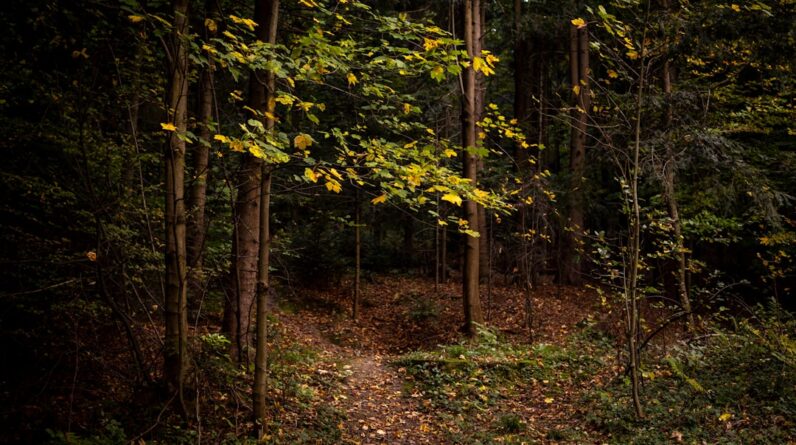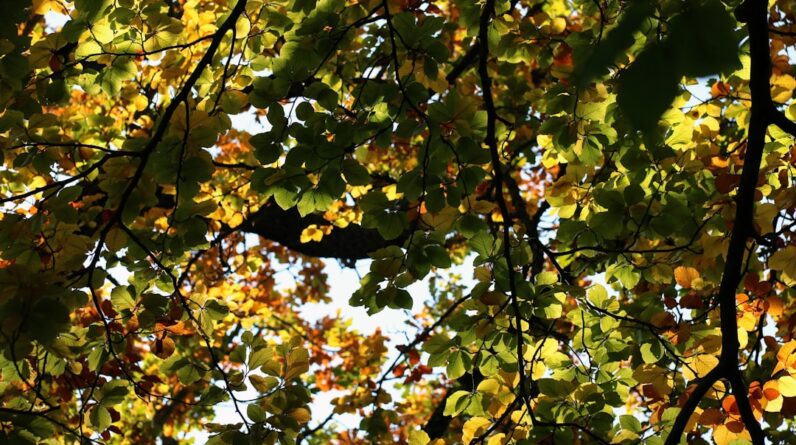Toronto’s street art scene is a vibrant and dynamic part of the city’s urban culture. Graffiti and street art have become an integral part of Toronto’s artistic landscape, adding color and creativity to the city’s streets. From large-scale murals to intricate stencils, Toronto’s street art scene showcases a wide range of styles and techniques. This article will explore the history of Toronto’s Graffiti Alley, the different styles of street art in the city, the evolution of graffiti culture, the role of street art in Toronto’s urban landscape, its impact on the art scene, its relationship with social activism, the challenges of preserving street art, and the future of graffiti and street art in Toronto.
Key Takeaways
- Toronto’s Graffiti Alley has a rich history dating back to the 1980s, when it was a hub for underground artists.
- The city is home to a diverse range of street art styles, from traditional graffiti to stencil art and murals.
- Graffiti culture in Toronto has evolved over the years, with artists now using social media to showcase their work and connect with other artists.
- Graffiti plays an important role in Toronto’s urban landscape, adding color and character to the city’s streets.
- Street art has had a significant impact on Toronto’s art scene, with many artists gaining recognition and opportunities to showcase their work in galleries and exhibitions.
The History of Toronto’s Graffiti Alley
Graffiti Alley, located in the heart of downtown Toronto, is a vibrant and ever-changing outdoor gallery that stretches for several blocks. It has become a hub for street artists from all over the city to showcase their work. The origins of Graffiti Alley can be traced back to the 1990s when graffiti started to gain popularity as an art form in Toronto. At that time, graffiti was seen as an act of rebellion and vandalism, but it soon evolved into a recognized form of artistic expression.
Graffiti Alley became a popular spot for street artists due to its central location and its acceptance by the local community. The alley provided a space where artists could freely express themselves without fear of prosecution. Over time, it became a place where artists could collaborate and learn from one another, leading to the development of a unique and diverse street art scene in Toronto.
The significance of Graffiti Alley’s location in the city cannot be overstated. Situated in an area known for its vibrant arts and culture scene, Graffiti Alley has become a must-visit destination for locals and tourists alike. Its proximity to other cultural landmarks such as galleries, theaters, and music venues has helped solidify its status as a cultural hotspot in Toronto.
Exploring the Different Styles of Street Art in Toronto
Toronto’s street art scene is known for its diversity and range of styles. From colorful murals to intricate stencils, there is something for everyone in the city’s street art scene. Some notable street artists in Toronto include Uber5000, Birdo, and Elicser Elliott, who have all made significant contributions to the city’s street art landscape.
Toronto’s street art scene can be categorized into various styles, including graffiti, stencil art, wheatpaste, and muralism. Graffiti, with its bold and expressive lettering, is one of the most prominent styles in the city. Stencil art, on the other hand, involves using stencils to create detailed and intricate designs. Wheatpaste is a technique that involves pasting paper or posters onto walls, while muralism focuses on large-scale murals that often tell a story or convey a message.
Compared to other cities, Toronto’s street art scene is unique in its diversity and inclusivity. The city embraces a wide range of styles and techniques, allowing artists to freely express themselves. This openness has attracted artists from all over the world to come and contribute to Toronto’s vibrant street art scene.
The Evolution of Graffiti Culture in Toronto
| Year | Number of Graffiti Incidents | Number of Graffiti Art Murals | Number of Graffiti Removal Requests | Number of Graffiti Related Arrests |
|---|---|---|---|---|
| 2000 | 500 | 10 | 100 | 50 |
| 2005 | 750 | 20 | 200 | 75 |
| 2010 | 1000 | 50 | 300 | 100 |
| 2015 | 1200 | 100 | 400 | 150 |
| 2020 | 1500 | 200 | 500 | 200 |
Graffiti culture in Toronto has evolved significantly over the years. What was once seen as an act of rebellion and vandalism has now become a recognized form of artistic expression. The rise of social media has played a significant role in this evolution, allowing artists to share their work with a wider audience and gain recognition for their talent.
Social media platforms such as Instagram have become virtual galleries for street artists, allowing them to showcase their work to a global audience. This exposure has not only helped artists gain recognition but has also led to collaborations and opportunities for them to showcase their work in galleries and exhibitions.
Technology has also played a role in the evolution of street art in Toronto. Advancements in digital art tools and techniques have allowed artists to experiment with new mediums and styles. Digital street art, which involves using digital tools to create art that can be projected onto buildings or displayed on screens, is gaining popularity in Toronto and other cities around the world.
The Role of Graffiti in Toronto’s Urban Landscape
Graffiti and street art play a significant role in shaping Toronto’s urban landscape. The vibrant and colorful murals that adorn the city’s walls add character and beauty to otherwise mundane spaces. They transform blank walls into works of art, creating a sense of vibrancy and energy in the city.
Graffiti and street art also have a complex relationship with gentrification. On one hand, street art can contribute to the revitalization of neighborhoods, attracting visitors and investment. On the other hand, it can also be seen as a sign of gentrification, as it often accompanies the arrival of new businesses and higher property values.
Despite these complexities, street art has the power to bring communities together and foster a sense of identity and pride. It can reflect the unique culture and history of a neighborhood, giving residents a sense of ownership and belonging. In this way, street art can contribute to the preservation of community identity in the face of rapid urban development.
The Impact of Street Art on Toronto’s Art Scene

Street art has had a significant impact on Toronto’s traditional art scene. It has challenged traditional notions of what constitutes art and has pushed boundaries in terms of medium, style, and subject matter. Street artists have brought their unique perspectives and experiences to the forefront, challenging established norms and sparking conversations about social issues.
The emergence of street art galleries and exhibitions has further legitimized street art as a recognized form of artistic expression. These galleries provide a platform for street artists to showcase their work in a more controlled and curated environment, allowing them to reach a wider audience and gain recognition within the art world.
Street art has also influenced contemporary art in Toronto by blurring the lines between street art and traditional art forms. Many contemporary artists in the city draw inspiration from street art and incorporate elements of it into their work. This cross-pollination of styles and techniques has led to the creation of unique and innovative artworks that challenge traditional notions of art.
The Relationship Between Graffiti and Social Activism in Toronto
Street art has long been used as a tool for social and political activism in Toronto. Artists have used their work to raise awareness about various social issues, including inequality, racism, and environmental degradation. By creating thought-provoking and visually striking pieces, street artists have been able to engage the public in important conversations and promote change.
One example of street art being used for social activism in Toronto is the Black Lives Matter movement. Following the killing of George Floyd in 2020, artists took to the streets to create powerful murals that honored his memory and called for an end to police brutality. These murals became symbols of resistance and solidarity, sparking conversations about systemic racism and police violence.
However, balancing artistic expression with activism can be challenging. Street artists often face criticism for using public spaces as a canvas for their political messages. Some argue that street art should remain apolitical and focus solely on aesthetics, while others believe that it is the responsibility of artists to use their platform to promote social change.
The Challenges of Preserving Street Art in Toronto
Preserving outdoor art, such as street art, poses unique challenges in a rapidly changing urban landscape. The ephemeral nature of street art means that it is constantly at risk of being destroyed or covered up by new development or graffiti vandalism. This poses a challenge for preserving street art as a cultural heritage and ensuring that future generations can enjoy and appreciate it.
The city plays a crucial role in preserving street art by implementing policies and initiatives that protect and promote street art. In Toronto, the city has designated certain areas as legal graffiti zones, where artists are encouraged to create and display their work. These zones provide a safe and legal space for artists to express themselves while also helping to preserve street art as part of the city’s cultural heritage.
Community involvement is also essential in preserving street art. Local residents and businesses can play a role in protecting and maintaining street art by reporting vandalism or damage to the city and supporting local artists. By fostering a sense of ownership and pride in the community, street art can be better preserved for future generations to enjoy.
The Future of Graffiti and Street Art in Toronto
The future of graffiti and street art in Toronto is promising. As technology continues to advance, new opportunities for artistic expression will emerge. Digital street art, augmented reality, and interactive installations are just some of the possibilities that lie ahead for street artists in Toronto.
The potential impact of new technologies on street art is vast. Artists will be able to experiment with new mediums, techniques, and styles, pushing the boundaries of what is possible in the realm of street art. Augmented reality can bring street art to life, allowing viewers to interact with artworks in new and exciting ways.
Street art will also continue to shape the future of Toronto’s urban landscape. As the city continues to grow and evolve, street art will play a crucial role in adding color, vibrancy, and character to its streets. It will continue to challenge traditional notions of art and push boundaries, sparking conversations about social issues and promoting change.
The Best Places to See Street Art in Toronto
Toronto is home to numerous locations where street art can be found. Graffiti Alley, located between Queen Street West and Richmond Street West, is a must-visit destination for street art enthusiasts. The alley is filled with colorful murals, stencils, and wheatpaste posters, showcasing the diversity and talent of Toronto’s street artists.
Other notable locations for street art in Toronto include Kensington Market, which is known for its vibrant and eclectic street art scene, and the Junction neighborhood, which features large-scale murals that reflect the area’s history and culture. The Distillery District is also worth exploring, as it is home to several murals and installations by local and international artists.
When exploring Toronto’s street art scene, it is important to respect the artwork and the artists who created it. Avoid touching or damaging the artwork, and be mindful of private property. It is also important to support local street artists by purchasing their work or attending their exhibitions and events.
The Intersection of Street Art and Tourism in Toronto
Street art has become a major tourist attraction in Toronto. Visitors from all over the world come to the city to explore its vibrant street art scene and experience its unique artistic culture. The popularity of street art has had a significant impact on the city’s tourism industry, attracting visitors who are interested in exploring the city’s artistic side.
However, balancing tourism with preserving street art can be challenging. The influx of tourists can put pressure on local communities and lead to increased development and gentrification. It is important for the city to find a balance between promoting tourism and preserving the authenticity and integrity of its street art scene.
Toronto’s street art scene is a vital part of the city’s urban culture. Graffiti and street art have transformed blank walls into vibrant works of art, adding color and creativity to Toronto’s streets. From Graffiti Alley to Kensington Market, there are numerous locations where visitors can explore Toronto’s diverse and dynamic street art scene.
It is important to support and preserve Toronto’s street art scene by respecting the artwork and the artists who created it. By attending exhibitions, purchasing artwork, and engaging in conversations about street art, we can help ensure that this vibrant and important part of Toronto’s cultural heritage continues to thrive.
If you’re interested in exploring more about Toronto’s vibrant street art scene, you might also enjoy reading an article on Travelogs titled “Unlocking the Sunshine Vitamin: Why Women Need to Prioritize Vitamin D for Optimal Health.” This informative piece discusses the importance of vitamin D for women’s health and provides insights into how to ensure you’re getting enough of this essential nutrient. Check it out here.








